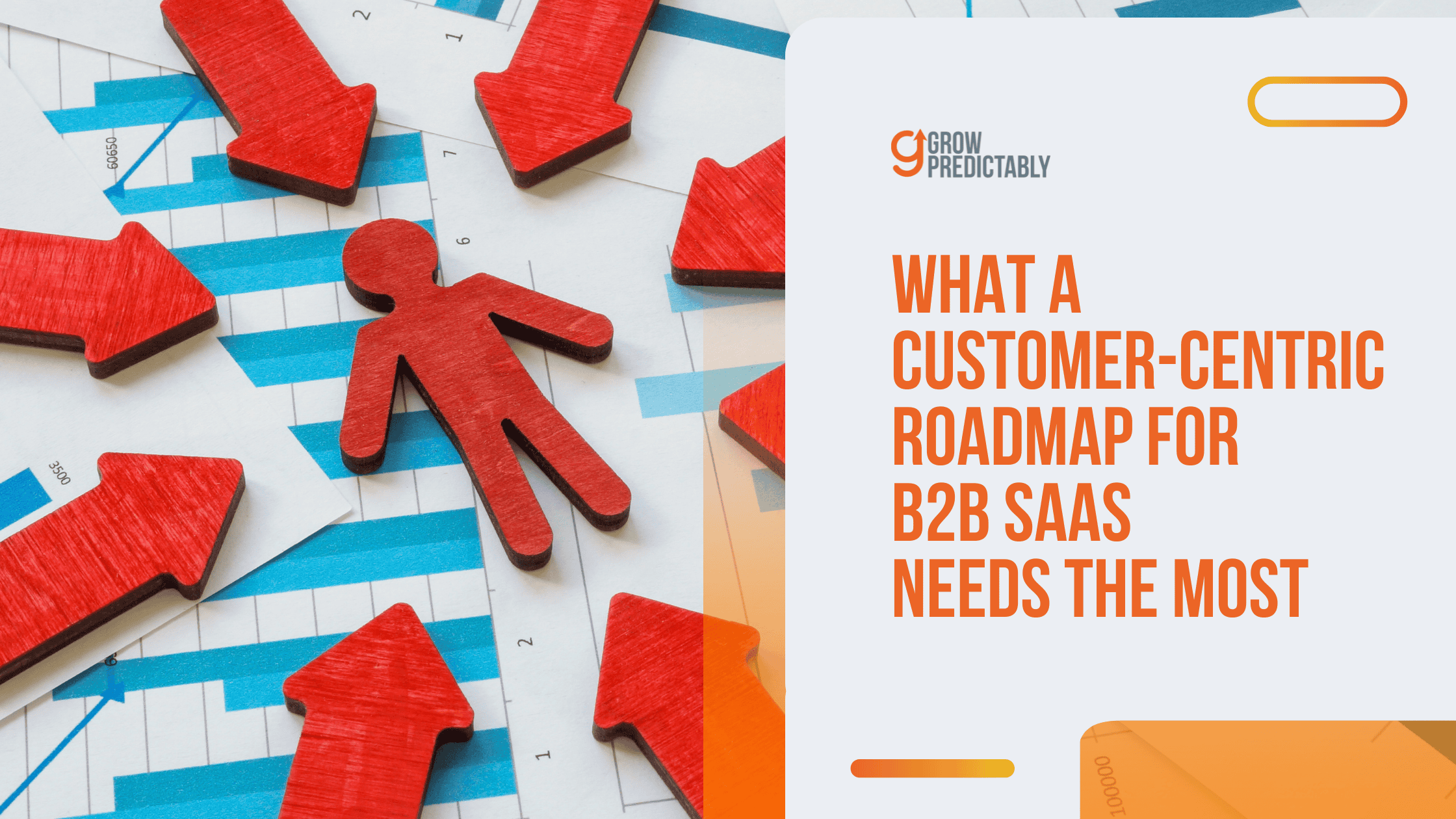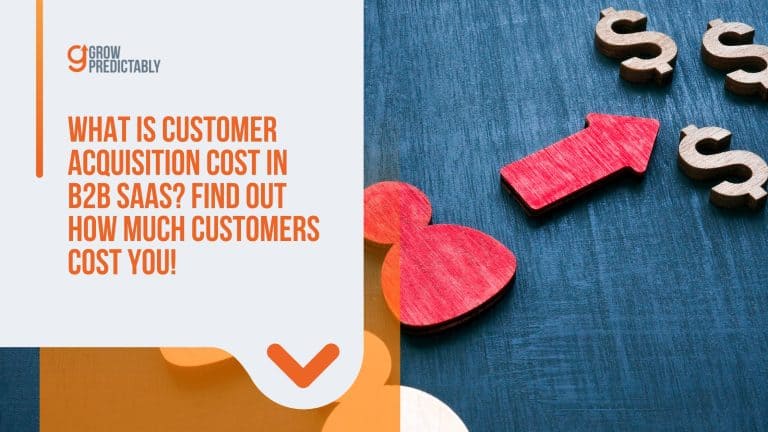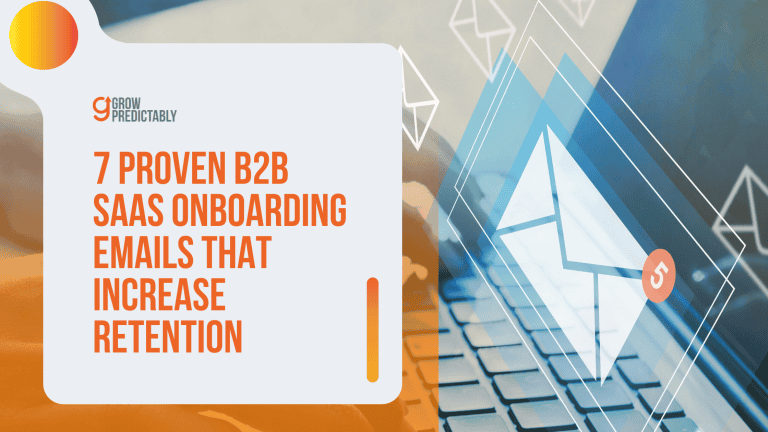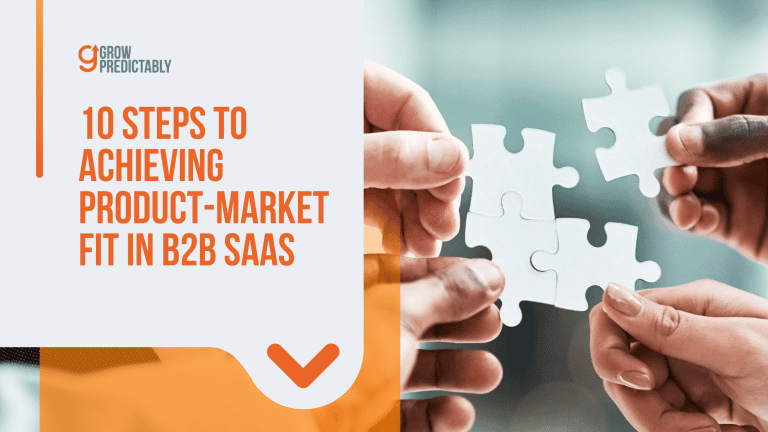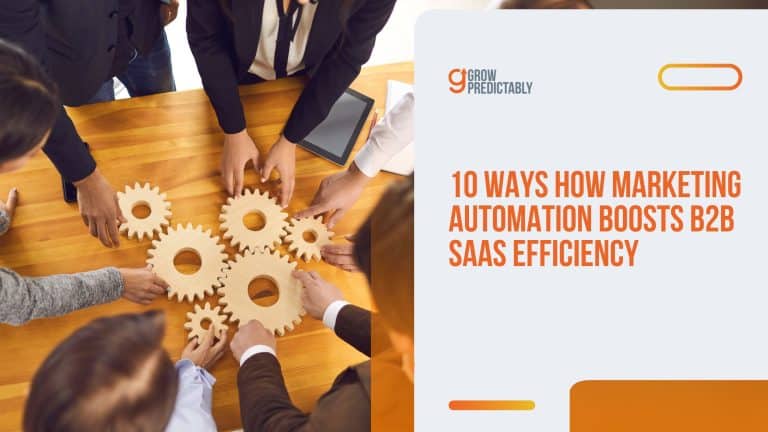What a Customer-Centric Roadmap for B2B SaaS Needs The Most
You’re pushing feature after feature, but do you really know what your customers need?
Switching to a customer-centric roadmap can skyrocket your B2B SaaS company’s retention by as much as 60%. (HubSpot)
It’s not just about adding new features; it’s about solving the right problems at the right time.
Now, how can you make sure your B2B roadmap is rooted in what brings your customers the ultimate experience?
Let’s outline how and highlight the one thing you need the most to super-charge this customer-centric approach.
Understanding Customer-Centric Roadmaps
Roadmaps in B2B SaaS guide the development and introduction of a product’s features over time.
They outline what a team will work on and their priorities.
Unlike traditional roadmaps focused primarily on feature releases, customer-centric roadmaps for B2B SaaS go a step further.
They prioritize the customer’s needs and challenges, directly aligning with customer success strategies.”
This strategy focuses on solving real issues faced by users rather than just adding new features.
By adopting a customer-centric approach, B2B SaaS companies can experience significant benefits, including up to 25% better customer loyalty (Forbes), as they align their product development with their customers’ actual demands and pain points.
This leads to improved customer experience and boosts customer lifetime value, crucial for long-term success driven by actionable customer feedback.
In B2B SaaS, it’s critical to distinguish between decision-makers who approve purchases and end users who interact with the software daily.
Customer-centric roadmaps must address the distinct needs of both groups to secure buy-in and enhance customer experience, ultimately driving customer success.
Aligning features with decision-makers’ ROI expectations and end-users’ operational demands ensures the sales process is smooth, ensuring broader adoption and sustained use, enhancing both initial sales success and long-term customer retention.
This dual focus is essential for delivering value at every level of the customer organization.
The Customer Value Journey (CVJ) Framework
The Customer Value Journey (CVJ) framework tracks customer behavior as they interact with your product from start to finish.
With every value you provided along their journey, this framework is designed to bring out the ultimate customer experience for your targets.

It has eight main stages:
- Awareness: Customer discovers your product.
- Engagement: They start exploring features.
- Trial: They test the product.
- Activation: They get their first win.
- Purchase: They become a paying customer.
- Adoption: They use the product regularly.
- Expansion: They buy more features/seats.
- Promotion: They tell others about you.
Benefits of the CVJ Framework
Aberdeen’s research found that companies that utilize both customer avatars and customer journey mapping had 70% better conversion than those that don’t. (Source)
Identifying and Addressing Customer Pain Points
Here’s what makes this work: Instead of guessing what features to build next, you look at where customers get stuck in their journey.
For example, if data shows users aren’t moving from trial to paid accounts, you focus on making that transition smoother – not adding random new features.
The Customer Value Journey (CVJ) helps spot these issues early and creates opportunities for enhancing customer success.
Say your enterprise customers struggle with team adoption after purchase.
Rather than building new features, you might need better team onboarding tools.
This targeted fix costs less and helps more than building stuff nobody asked for.
The Focus on Customer Needs
Remember – customers don’t care about features.
They care about getting their work done better and faster.
A customer-centric roadmap keeps you focused on that goal, not just shipping new stuff.
Why Customer Data is Critical for Customer-Centric Roadmaps
Customer data is vital as it provides direct insights into what customers need, want, and value.
This information shapes a customer-centric roadmap by highlighting priority areas for improvement, revealing customer pain points, and enabling personalized experiences.
Sources for Collecting Customer Data
- Surveys and Feedback Forms: Regularly engage with customers via surveys or feedback forms to gather opinions and satisfaction levels.
- Product Usage Analytics: Use software tools to track how customers interact with your product, which features they use most, and where they face difficulties.
- Customer Support Logs: Analyzing interactions with customer support and customer behavior to identify issues or requests that inform product development.
- Social Media and Forums: Monitor mentions and discussions about your product or brand to understand customer sentiment and needs.
Utilizing Customer Data Effectively
- Analyze for Trends: Look for patterns and trends in the data that can pinpoint specific needs or recurring problems.
- Prioritize Based on Impact: Use insights to prioritize roadmap items that will have the most significant impact on customer satisfaction and retention.
- Continuously Update: Regularly revisit and revise the roadmap based on new data and feedback to stay aligned with customer expectations and market changes.
By strategically collecting and applying customer data, B2B SaaS companies can create robust, effective roadmaps that genuinely resonate with their users, fostering loyalty and driving growth.
6 Simple Steps to Structuring a Customer-Centric Roadmap
Creating a customer-centric roadmap for a B2B SaaS product involves several steps.
Each step focuses on aligning product features and enhancements with the real needs of your customers, ensuring that every update or new feature drives value for them.
Here’s a straightforward guide to help you build your roadmap, focusing on critical milestones for customer success
1. Gather Customer Insights
Start by collecting and analyzing data from various sources to understand your customers’ needs and pain points.
This includes feedback from support tickets, customer surveys, NPS scores, and interviews.
Pay attention to the challenges your customers mention and note any recurring themes or requests.
This will help you identify the most critical areas for improvement or development.
After gathering the necessary customer insights, the next thing you should do is:
- Organize and Categorize Data: Compile all the gathered information into a central repository. This could be a CRM, a spreadsheet, or a specialized analytics tool. Organize the data by source—such as support tickets, survey responses, NPS scores, and interview notes.
- Analyze the Feedback: Review the categorized data to perform a deeper analysis. Look for patterns that suggest widespread challenges or opportunities for improvement. Identify the most frequently mentioned pain points.
- Validate with Stakeholders: Present your findings to key stakeholders within your organization. This may include the customer support team, product managers, and executives. The purpose is to validate your findings.
- Prioritize Actions: Based on the validated issues, use a prioritization framework like MoSCoW (Must have, Should have, Could have, Would have) or ICE (Impact, Confidence, Ease) to rank each potential improvement or feature. Prioritize tasks that are critical to customer satisfaction and business goals.
2. Segment Your Customers
Divide your customers into meaningful segments based on factors like business size, industry, user role, or usage patterns.
Customer segmentation allows you to tailor your roadmap more accurately according to the specific needs and behaviors of different groups.
This step ensures that the features you plan to develop have a direct impact on the user experiences of these targeted segments.
Segment with the Customer Avatar Canvas
Using the Customer Avatar Canvas effectively can greatly improve the process of segmenting your customers for a B2B SaaS, ensuring that each segment you create receives the most tailored and impactful experience.
Here’s a straightforward approach to achieve this with the Customer Avatar Canvas.

Step-by-step Approach Using Customer Avatar Canvas:
- Identify Key Customer Segments: Begin by listing the major groups within your customer base. These could be based on business size (small, medium, large enterprises), industry (tech, healthcare, education), user role (admins, end-users), or usage patterns (frequent, occasional users).
- Create an Avatar for Each Segment: Utilize the Customer Avatar Canvas to develop a detailed profile for each segment. Include demographics (company size, sector), psychographics (goals, pain points), and the specific needs of each type of user.
- Document ‘Before/After’ States: For each avatar, clearly outline the ‘Before’ state (customer’s situation before using your product) and the ‘After’ state (how your product changes their situation). This helps pinpoint exactly what each segment values most about your product.
- Tailor Features to Each Avatar: Use the insights from the avatars to identify which features or improvements are most relevant to each segment. This ensures that your roadmap directly addresses the unique needs of each group, enhancing user experience and satisfaction.
- Communicate Tailored Value: When updating your roadmap or communicating with customers, highlight how upcoming features or improvements specifically benefit each segment based on their avatars. This personalized approach can significantly increase customer engagement and loyalty.
- Select One Segment to Start: Begin with one customer segment that you understand well, or that represents a significant portion of your customer base.
- Gather Existing Data: Utilize any existing customer data from customer support interactions, feedback forms, and usage analytics to start filling out the Customer Avatar Canvas.
- Solicit Direct Feedback: Engage with customers from this segment through surveys or interviews to fill in gaps in your canvas, focusing on understanding their ‘Before’ and ‘After’ states.
- Implement Insights Quickly: Apply initial insights to make quick, impactful adjustments to your product’s development focus or customer communications strategy.
By methodically applying the Customer Avatar Canvas, you can enhance your understanding of different customer segments, making your roadmap more customer-centric and strategically targeted.
This depth of customer insight facilitates more precise adjustments to your product, ultimately driving better retention and satisfaction rates.
3. Prioritize Based on Impact and Feasibility
Evaluate the collected ideas and issues based on their potential impact on customer satisfaction and retention, as well as their feasibility within your current resources.
Employ frameworks like the Value vs. Complexity matrix to prioritize developments that provide high value to customers but require relatively low effort to implement.
This helps ensure that your team works efficiently on improvements that matter the most.
How to Use the ‘Value vs. Complexity’ Matrix

➡️ Set Up the Matrix
Draw a two-axis graph:
- Vertical Axis (Value): This represents the potential impact on customer satisfaction and retention. The higher the position on the axis, the greater the value to the customer.
- Horizontal Axis (Complexity): This measures the difficulty, resources required, and time needed to implement each feature or improvement. The further right, the more complex the implementation.
➡️ Categorize Ideas
List down all the potential features, enhancements, or fixes. Place each item within the matrix based on your assessment of its value and complexity.
➡️ Analyze and Prioritize
- High Value, Low Complexity (Quick Wins): These should be prioritized as they promise the best ROI with minimal effort.
- High Value, High Complexity (Major Projects): Deserve attention but require careful planning and resource allocation.
- Low Value, Low Complexity (Fill-Ins): Can be considered if there’s extra time or resources.
- Low Value, High Complexity (Thankless Tasks): Generally to be avoided or re-evaluated.
4. Define Goals and Metrics for Success
For each feature or improvement on the roadmap, define clear, measurable goals.
What specific customer problems will this address? How will you measure success?
Common metrics include adoption rates, customer satisfaction scores, and churn rates.
By setting these metrics, you can later assess how well each roadmap item meets its objectives.
5. Create a Timeline
Organize the prioritized features into a timeline that outlines when each will be developed and released.
This should take into account your team’s capacity and any external factors like market trends or product life cycle stages.
Ensure there is flexibility built into your roadmap to accommodate feedback and adjustments as necessary.
6. Communicate Internally and Externally
Share the roadmap with your entire team to ensure everyone understands the direction and priorities of the product.
Additionally, consider sharing a version of the roadmap with customers.
This transparency builds trust, enhances the customer experience, and keeps your users informed about what improvements they can expect and when.
- Create clear, visually appealing versions of the roadmap to share. Use tools like diagrams or Gantt charts to make it easy to understand at a glance.
- Tailor the information according to the audience. Employees need more technical and strategic details, while customers might appreciate simpler, more outcome-focused explanations.
- Make regular updates:
- Internally: Hold brief, regular update meetings to keep the team aligned on progress and changes.
- Externally: Send out periodic newsletters or updates via email or dedicated customer portals to keep customers informed of the latest developments.
By following these steps, you’ll be able to create a dynamic, customer-centric roadmap that not only drives your product forward but also strongly aligns with the needs and expectations of your customers.
This strategic focus on customer outcomes can significantly boost customer satisfaction and retention, thereby impacting your SaaS company’s success positively.
Overcoming Common Challenges in Customer-Centric Roadmapping
Building customer-centric roadmaps isn’t easy.
Here are the main problems companies run into and how to fix them.
Getting Teams to Work Together
Most companies struggle with departments that don’t talk to each other.
Product teams make features without checking with customer success teams.
Marketing promises stuff the product can’t deliver yet.
According to the team collaboration app Pumble, 86% of employees and executives say poor communication between departments causes many work failures. (Source)
The fix? Weekly syncs between product, marketing, and customer success teams.
Keep them short – 30 minutes max.
Focus on:
- What customers are asking for
- Which features are coming up
- What sales and marketing are telling prospects
Dealing with Complex B2B Sales
B2B deals take forever and have tons of decision-makers.
A Gartner study shows enterprise deals now involve 11+ people and take 4-6 months to close.
Some ways to handle this within the sales process:
- Map out who makes decisions at each company
- Track feature requests by role (CEO vs end-user)
- Build different product demos for different roles
- Keep notes on what each decision-maker cares about
Too Much Data, Not Enough Action
Companies collect tons of data but freeze when trying to use it.
According to a study by Braze, 80% of marketers feel overwhelmed by customer data, saying “they are collecting more data than they know what to do with.” (Source)
Here’s what works:
- Pick 3-5 key metrics that matter most
- Set up automated reports
- Look at trends, not daily numbers
- Ask, “What would make us change course?” before collecting new data
Making It Work
The trick is starting small.
Don’t try to fix everything at once.
Pick one challenge, like team communication, and work on that first.
Once you’ve got that running smoothly, tackle the next thing.
Remember – perfect is the enemy of good.
Your roadmap won’t be perfect, but it’ll get better as you keep working on it.
FAQs
Transitioning to a Customer-Centric Roadmap
Let’s wrap this up with what really matters.
Throughout this article, we’ve seen how the Customer Value Journey (CVJ) helps SaaS companies build better products that customers actually want to use and stick with.
Here’s what we learned:
Customer-Centric Roadmaps
- Customer-centric roadmaps beat feature-focused ones: Companies using customer journey mapping see a 10-15% increase in revenue. (McKinsey)
Matching Roadmaps to Customer Use
- Your roadmap needs to match how customers actually use your product – from when they first sign up to become loyal fans who tell others about it.
Quick Checklist to Get Started
Want to get started?
Here’s your quick checklist:
- Look at your current roadmap – mark which features help customers at each CVJ stage.
- Talk to 5 customers this week about their biggest problems.
- Pick one stage of the journey that needs work and focus there first.
- Set up basic tracking for usage, NPS, and customer satisfaction.
- Get your team together monthly to review customer feedback.
Remember – this isn’t about making a perfect roadmap overnight.
Start small, listen to your customers, and keep improving.
Your customers (and your bottom line) will thank you for it.

